Trekking in Nepal is an adventure that transcends mere walking or hiking; it's a profound journey through some of the world's most stunning landscapes and cultural tapestries. With Luxury Holidays Nepal Pvt. Ltd., embark on a trek that offers more than just scenic vistas; it's an exploration into the heart of the Himalayas. Here, you'll traverse diverse trails ranging from the iconic Everest Base Camp to the secluded paths in the Annapurna region. Along the way, you will be greeted with breathtaking scenery that includes towering peaks, lush valleys, and serene alpine lakes. Nepal’s trekking experience is further enriched by its rich cultural heritage; as you pass through remote villages and ancient trading routes, you’ll encounter a mosaic of ethnic groups, each with unique traditions and warm hospitality. Moreover, Nepal's commitment to sustainable and eco-friendly travel ensures that your journey is as responsible as it is memorable. Whether you seek a personal challenge, spiritual enrichment, or simply an escape into nature, trekking in Nepal with Luxury Holidays Nepal offers an unparalleled experience.
We proudly stand as the premier choice for trekking adventures in Nepal. Our deep-rooted passion for the Himalayas, combined with our commitment to excellence, sets us apart as the best trekking company in this majestic land. We understand that trekking in Nepal is more than a journey; it's a life-altering experience. Therefore, we meticulously craft each itinerary to ensure a perfect blend of adventure, comfort, and cultural immersion. Our expert guides, who are natives with extensive local knowledge, lead you through the heart of the Himalayas, offering insights that go beyond the guidebooks. With us, you'll experience the warmth of Nepalese hospitality, marvel at the breathtaking landscapes, and embrace the rich cultural tapestry that Nepal has to offer. Our dedication to sustainable and eco-friendly travel practices means that your trek not only leaves a lasting impression on you but also positively impacts the local communities and environments. Choosing Luxury Holidays Nepal means choosing an adventure that is safe, authentic, and unforgettable. We invite you to discover the wonders of Nepal with us, where every step is a journey of discovery and every trail leads to new horizons.
Varied Trekking Routes
Trekking in Nepal is an experience defined by its diversity, especially in the variety of trekking routes it offers. Each route in Nepal has its own unique characteristics, challenges, and beauty, catering to a wide range of preferences and skill levels. Here's an overview of some of the varied trekking routes in Nepal:
- Everest Base Camp Trek: This iconic trek takes you to the base of the world's highest mountain, Mount Everest. It's a challenging route known for its stunning views of the Himalayas, unique Sherpa culture, and famous landmarks like Namche Bazaar, Tengboche Monastery, and the Khumbu Glacier.
 Trek-1.jpg)
- Annapurna Circuit Trek: Circumnavigating the Annapurna Massif, this trek is famous for its diverse landscapes, ranging from sub-tropical forests to high-altitude plateaus. Trekkers experience a variety of cultures, and climatic zones, and can witness the stunning Annapurna and Dhaulagiri ranges.
- Ghorepani Poon Hill Trek: Ideal for beginners or those short on time, this trek offers spectacular mountain views, charming villages, and lush rhododendron forests. The highlight is Poon Hill, a famous viewpoint for sunrise and panoramic views of the Annapurna and Dhaulagiri ranges.
- Annapurna Base Camp Trek: This classic trek leads you to the base of the magnificent Annapurna massif. The trail takes you through picturesque villages, dense rhododendron forests, and high-altitude landscapes, with the Annapurna range constantly in view.)
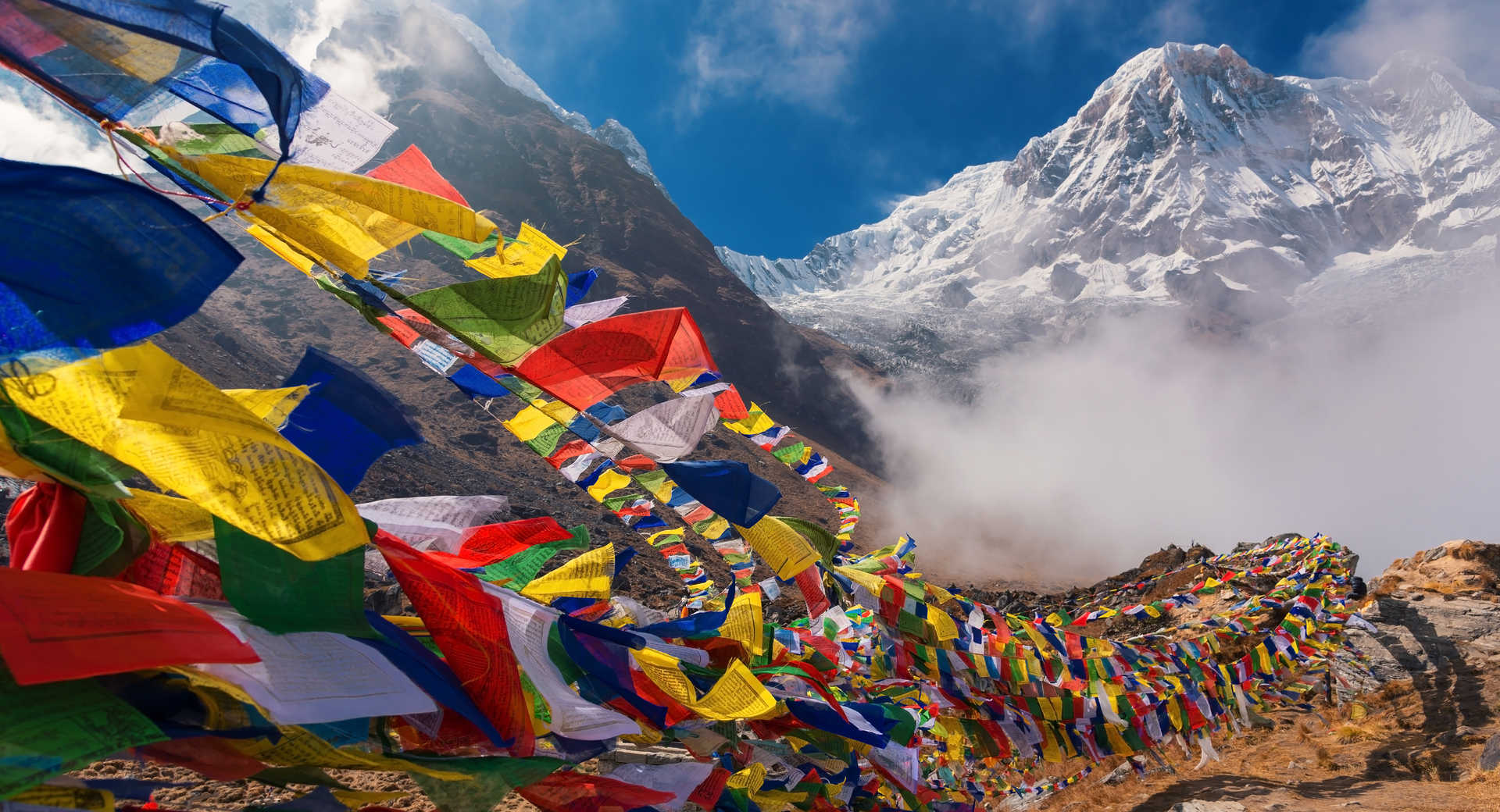
- Langtang Valley Trek: Located close to Kathmandu, this trek is known for its relatively easy access, beautiful valley views, and the unique culture of the Tamang people. It's a great option for those limited on time but wishing to experience the beauty of the Himalayas.
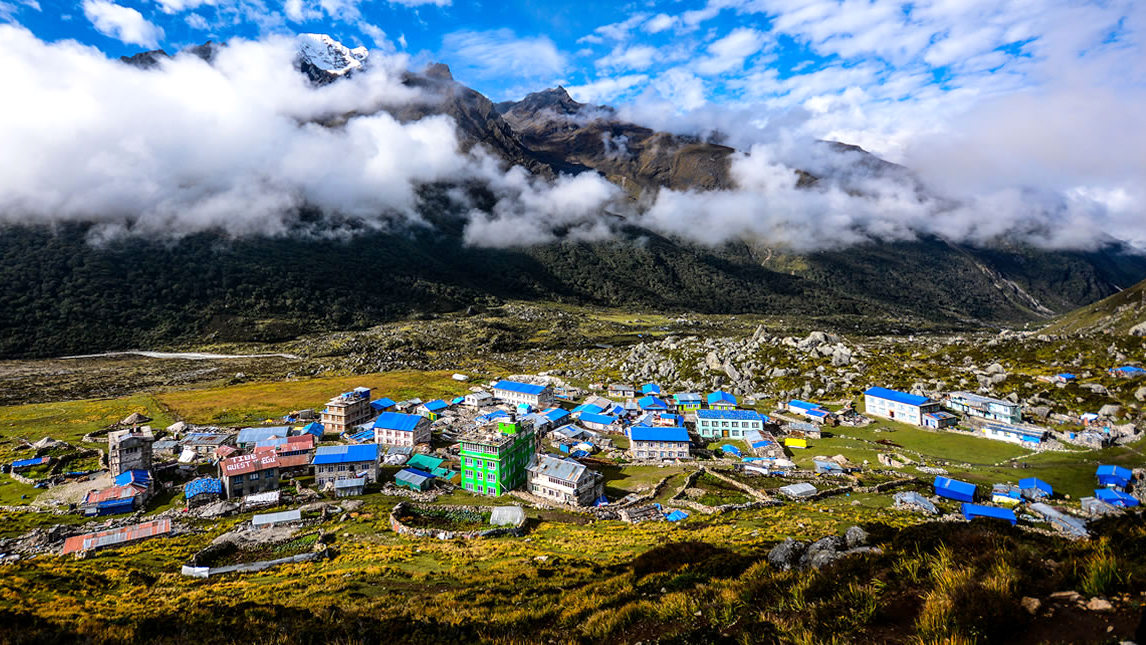
- Mardi Himal Trek: The Mardi Himal Trek is a relatively newer and less crowded trail in the Annapurna region. It offers a close-up view of the entire Annapurna range, Machapuchare, and Mardi Himal.
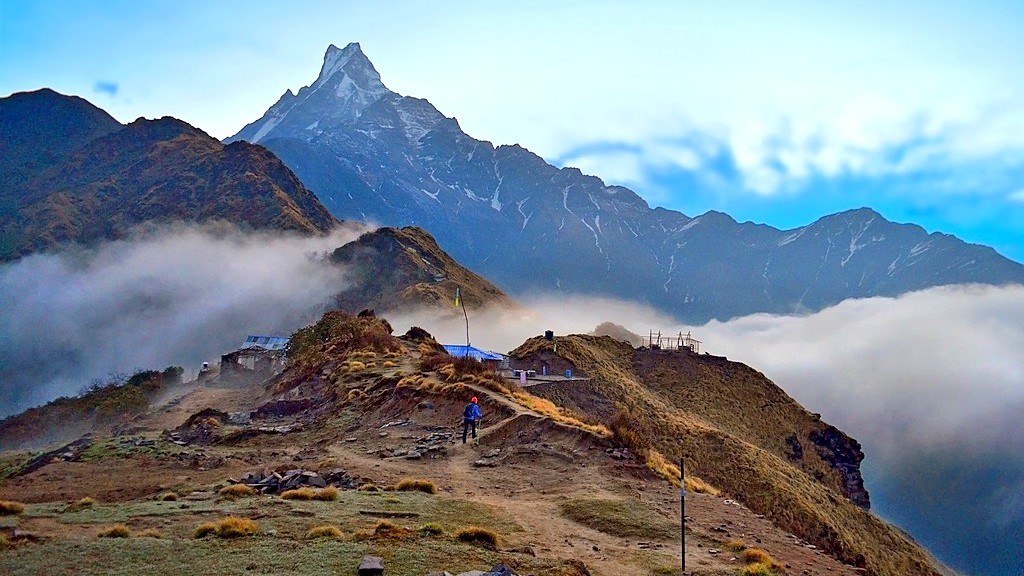
- Manaslu Circuit Trek: This trek circles the eighth-highest peak in the world, Mt. Manaslu. It's known for its remote trails, cultural diversity, and stunning views of the Manaslu range. This trek is less crowded compared to Everest or Annapurna, offering a more solitary experience.
-0.jpg)
- Gokyo Lakes Trek: An alternative to the traditional Everest Base Camp trek, this route is known for its serene turquoise lakes, the largest glacier in Nepal, and less crowded trails. It offers a panoramic view of Everest from Gokyo Ri.
-0.jpg)
-
Upper Mustang Trek: This trek takes you to the former kingdom of Lo, a region with a landscape and culture more akin to Tibet than Nepal. It's known for its arid, desert-like terrain, ancient monasteries, and the medieval town of Lo Manthang.
- Kanchenjunga Base Camp Trek: This challenging trek in eastern Nepal takes you to the base camps of the world’s third-highest mountain, Kanchenjunga. It's a remote trek known for its pristine landscapes, diverse wildlife, and few trekkers.
-
Three Passes Trek: For the ultimate challenge, this trek takes you over three high passes in the Everest region - Kongma La, Cho La, and Renjo La. It combines stunning views, Sherpa culture, and the thrill of high-altitude trekking.
Each of these treks showcases the varied geography and rich cultural tapestry of Nepal, making it a top destination for trekkers seeking adventure in the heart of the Himalayas.
Rich Cultural Experience
Trekking in Nepal offers much more than just physical exercise and stunning natural landscapes; it's also a gateway to a rich cultural experience. Nepal’s diverse ethnic groups, each with their unique traditions, languages, and lifestyles, add a profound cultural dimension to the trekking experience.
-
Sherpa Culture in the Everest Region: The Everest region is synonymous with the famous Sherpa community, known for its mountaineering prowess and unique Tibetan-Buddhist culture. Trekkers can visit monasteries like Tengboche, interact with local monks, and learn about Sherpa traditions and lifestyle.
-
Gurung and Magar Communities in the Annapurna Region: The Annapurna Circuit passes through villages inhabited by the Gurung and Magar people. These communities are known for their warm hospitality, colorful dances, and rich folklore. The traditional Gurung village of Ghandruk is a cultural highlight.
-
Tamang Heritage in Langtang: The Langtang region is predominantly inhabited by the Tamang people, whose culture is heavily influenced by Tibetan Buddhism. Trekkers can experience their unique customs, traditional houses, and handicrafts, providing a glimpse into the life of Himalayan highlanders.
-
Manaslu and Tsum Valley: The Tsum Valley, part of the Manaslu trek, is a hidden gem rich in ancient art, culture, and religion. The region is dotted with centuries-old monasteries like Mu Gompa and Rachen Gompa, showcasing the deep-rooted Buddhist culture.
-
Mustang’s Tibetan Culture: Upper Mustang, once an independent kingdom, is known for its well-preserved Tibetan culture, ancient monasteries like Lo Gekar, and the walled city of Lo Manthang. The region’s stark landscapes are complemented by its vibrant cultural festivals like Tiji.
-
Rai and Limbu Cultures in Kanchenjunga: The trek to Kanchenjunga Base Camp introduces trekkers to the cultures of the Rai and Limbu people, known for their distinct languages, traditional attire, and unique customs.
-
Thakali Culture in Mustang and Annapurna Regions: The Thakali people, originally from the Kali Gandaki valley of Mustang, are known for their rich culinary heritage and well-preserved architecture. Trekkers often enjoy Thakali cuisine, a highlight of trekking in this region.
- Cultural Interaction and Homestays: Many trekking routes offer homestay options, allowing trekkers to live with local families. This provides an intimate experience of daily life, local cuisine, and traditional practices in Nepalese villages.
-
Festivals and Celebrations: Timing a trek with local festivals like Dashain, Tihar, Mani Rimdu, or Tiji can provide a deeper cultural experience. These festivals are vibrant, full of music, dance, and rituals, and offer an authentic glimpse into the rich cultural tapestry of Nepal.
The rich cultural experience during a trek in Nepal is an integral part of the journey, offering trekkers a unique opportunity to immerse themselves in the traditions and lifestyles of the Himalayan people.
Unique Flora and Fauna
Trekking in Nepal not only captivates with its majestic mountains and rich cultural heritage but also with its unique flora and fauna. The country's diverse ecological zones, from tropical lowlands to alpine highlands, provide habitats for a wide array of wildlife and plant species, making it a biodiversity hotspot.
-
Rhododendron Forests: Nepal's hills, especially at moderate altitudes, are famous for their rhododendron forests. These forests are particularly stunning during spring when the flowers bloom in vibrant colors, creating a picturesque landscape.
-
Alpine Meadows and High-Altitude Flora: As trekkers ascend to higher altitudes, the vegetation changes to alpine grasslands and meadows. These areas are home to unique high-altitude plant species, including edelweiss, juniper, and various medicinal herbs.
-
Rare Wildlife in Protected Areas: Nepal's national parks and conservation areas, such as Sagarmatha National Park (Everest region), Annapurna Conservation Area, and Langtang National Park, are sanctuaries for rare and endangered wildlife. These include the snow leopard, red panda, Himalayan tahr, and musk deer.
-
Birdwatching Opportunities: Nepal is a paradise for birdwatchers, with over 850 bird species recorded. The lower regions of the trekking trails, particularly in areas like the Annapurna region, are great for spotting various species of pheasants, eagles, and vultures.
-
Sub-Tropical Jungles in Lower Regions: In the lower regions, particularly in areas like the foothills of the Annapurna and Langtang ranges, trekkers can find subtropical jungles. These jungles are home to diverse flora and fauna, including different monkey species, leopards, and a variety of bird species.
-
Biodiversity in Manaslu and Kanchenjunga Regions: The Manaslu and Kanchenjunga regions, known for their remote and unspoiled trails, offer a chance to witness the untouched natural beauty and diverse ecosystems that include both alpine and subtropical species.
-
Floral Diversity in Spring: Spring, particularly from March to May, is a remarkable time for flora enthusiasts. The hills and mountains burst into life with a variety of flowers, not just rhododendrons, but also magnolias, wild orchids, and a multitude of other species.
-
Medicinal Plants and Herbs: Many regions in Nepal, especially the high-altitude areas, are known for their medicinal plants and herbs like Yarsagumba (Cordyceps sinensis), which is highly valued for its medicinal properties.
-
Wetlands and Riverine Forests: In regions like the Koshi Tappu Wildlife Reserve, trekkers can explore wetlands and riverine forests, which are crucial habitats for migratory birds, reptiles, and aquatic species.
-
Butterflies and Insects: Nepal's diverse climate zones also support a wide range of butterflies and insects, some of which are endemic to the region. The variety of butterflies adds a colorful dimension to the treks, especially in the lower forested areas.
The unique flora and fauna of Nepal add an extra layer of wonder to the trekking experience, offering trekkers a chance to connect with nature in its most pristine form. Whether you're an avid birdwatcher, a wildlife enthusiast, or simply a lover of nature, the natural diversity of Nepal's trekking trails is sure to enchant and inspire.
Teahouse Trekking
Teahouse Trekking in Nepal is a distinctive and popular way of experiencing the Himalayas. Unlike wilderness treks that require carrying tents and food, teahouse trekking involves staying in small lodges or 'teahouses' that offer basic accommodation and meals along the trekking routes. This style of trekking has become a hallmark of Nepalese adventure travel, blending the ruggedness of hiking with the comfort of warm hospitality.
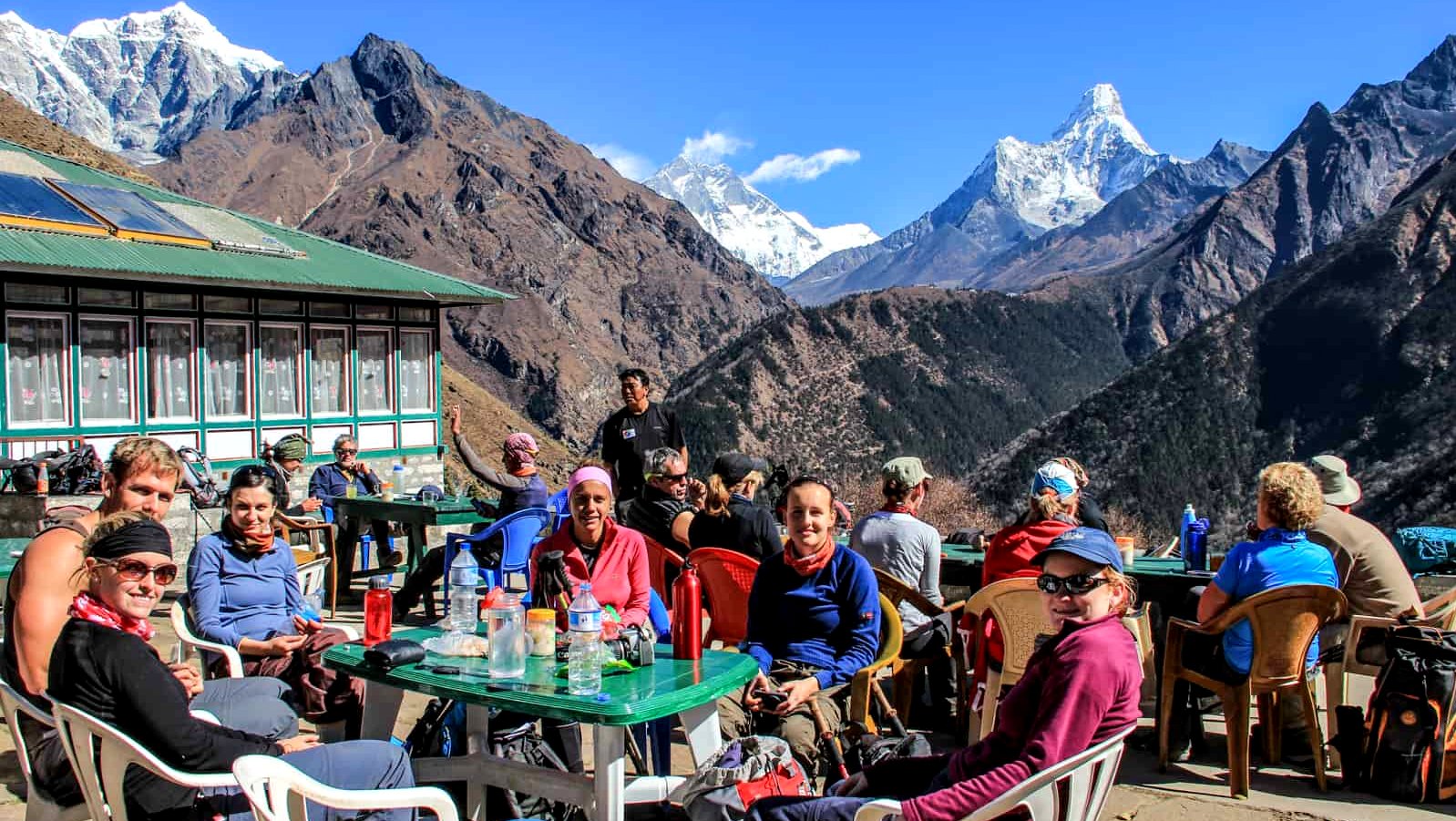
-
Comfort and Convenience: Teahouses provide a comfortable place to rest and recuperate. They typically offer rooms with beds and shared washroom facilities, which, while basic, are a welcome comfort after a long day's trek.
-
Cultural Interaction: Staying in teahouses offers a unique opportunity to interact with local Nepalese people and experience their hospitality. It's an intimate way to learn about the lifestyle and culture of the mountain communities.
-
Local Cuisine: Teahouses serve local Nepali food, primarily Dal Bhat (rice with lentil soup), as well as a variety of other dishes, including international cuisine to cater to diverse palates. This is an excellent way to experience the local cuisine.
-
Economically Beneficial to Local Communities: Teahouse trekking supports the local economy. The teahouses are mostly run by local families, and staying in them helps to distribute tourism income directly to the community.
-
Ease of Planning: Teahouse trekking simplifies logistics as trekkers don’t need to carry tents or cooking equipment. Meals and accommodation are taken care of, allowing trekkers to focus solely on the experience.
-
Popular Routes for Teahouse Trekking: The most popular routes for teahouse trekking are in the Everest, Annapurna, and Langtang regions. These trails have a well-established network of teahouses, offering various levels of comfort and amenities.
-
Sustainability: Many teahouses are increasingly adopting sustainable practices, such as using solar power for heating and lighting. Choosing eco-friendly teahouses helps promote responsible tourism.
-
Socializing with Fellow Trekkers: Teahouses are social hubs where trekkers from around the world gather. They offer a communal atmosphere, ideal for sharing stories and making new friends.
-
Variety in Standards: The standard of teahouses varies from basic to relatively luxurious, especially in popular trekking areas. Some offer additional amenities like hot showers, Wi-Fi, and charging facilities for electronic devices.
-
Experience Throughout the Year: Teahouse trekking is possible throughout the year, with each season offering a different experience – from the blooming rhododendron forests in spring to the clear skies and better mountain views in autumn.
Teahouse Trekking in Nepal not only makes trekking in the Himalayas more accessible and comfortable but also adds an enriching cultural dimension to the trekking experience. It is a unique blend of adventure, comfort, and cultural immersion.
Adventure Activities
Adventure Activities in Nepal complement the trekking experience, offering trekkers a chance to engage in a variety of thrilling and culturally enriching activities. Nepal's diverse terrain and rich cultural landscape provide a perfect backdrop for numerous outdoor and adventure pursuits.
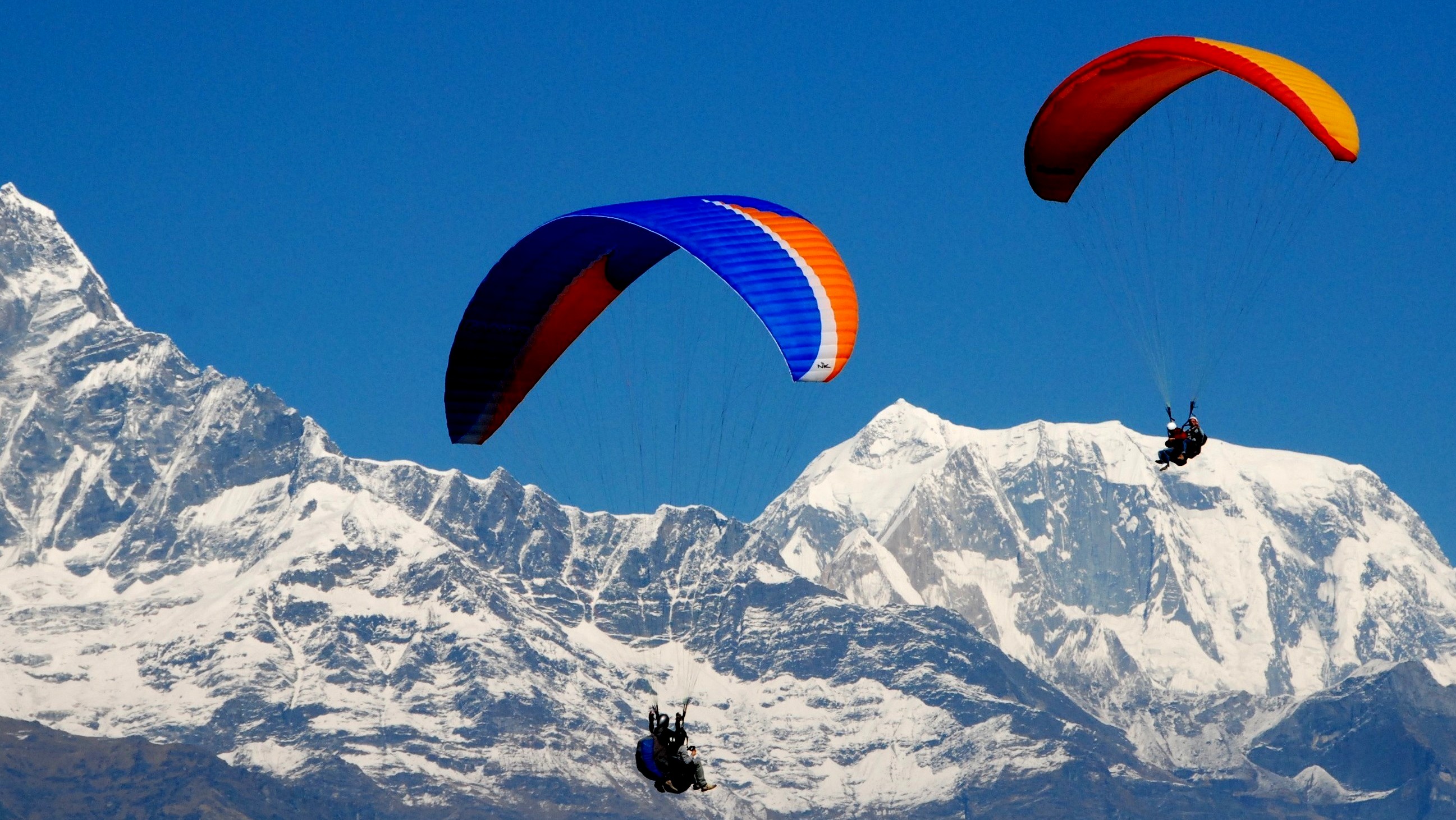
-
Mountain Biking: Nepal's rugged trails and scenic countryside offer excellent opportunities for mountain biking. Biking trips can range from a day tour around the Kathmandu Valley to multi-day adventures in the Annapurna region or Upper Mustang.
-
White Water Rafting and Kayaking: The fast-flowing rivers originating from the Himalayas are ideal for white water rafting and kayaking. The Trishuli, Bhote Koshi, and Seti rivers offer rapids that range from gentle floats to challenging white waters.
-
Paragliding: The town of Pokhara, set against the backdrop of the Annapurna massif, is one of the world's top paragliding destinations. Paragliding here offers breathtaking views of lakes and mountains and is an experience of a lifetime.
-
Jungle Safaris: The national parks in the Terai region, like Chitwan and Bardia, offer jungle safaris. These safaris are great for spotting wildlife such as rhinos, tigers, elephants, and a variety of birds.
-
Rock Climbing: For climbing enthusiasts, Nepal offers several rock climbing sites, both inside and around the Kathmandu Valley. These range from beginner to advanced levels, providing a great way to experience Nepal's geology up close.
-
Canyoning: Canyoning in the waterfalls and canyons of Nepal is an exhilarating activity that combines rappelling, climbing, jumping, and swimming. This adventure is offered in locations like the Bhote Koshi Valley.
-
Bungee Jumping: For adrenaline junkies, bungee jumping into the Bhote Koshi River gorge, near the Tibet border, is a thrilling experience. The jump, one of the highest in the world, offers an ultimate rush against a dramatic backdrop.
-
Zip-Lining: Zip-lining is another popular activity, especially in Pokhara, where you can zip over incredible landscapes with views of the Annapurna range and the valley below.
-
Cultural Tours and Village Walks: Beyond the high-adrenaline activities, cultural tours and village walks offer a peaceful yet enriching experience, providing insights into the local way of life, traditions, and history.
-
Yoga and Meditation Retreats: Many trekkers combine their hiking adventures with yoga and meditation retreats, available in places like Pokhara and Kathmandu. These retreats offer a perfect way to unwind and reconnect with oneself amidst the serenity of nature.
These adventure activities in Nepal cater to a broad spectrum of interests and skill levels, ensuring that every trekker can find something exciting to complement their trekking experience. Whether seeking an adrenaline rush or a peaceful cultural encounter, Nepal's diverse offerings make it an ultimate destination for adventure seekers.
Professional Guides and Porters
Our professional guides and porters can significantly enhance your trekking experience in Nepal. They not only assist in navigating the trails but also enrich your journey with their local knowledge and expertise.
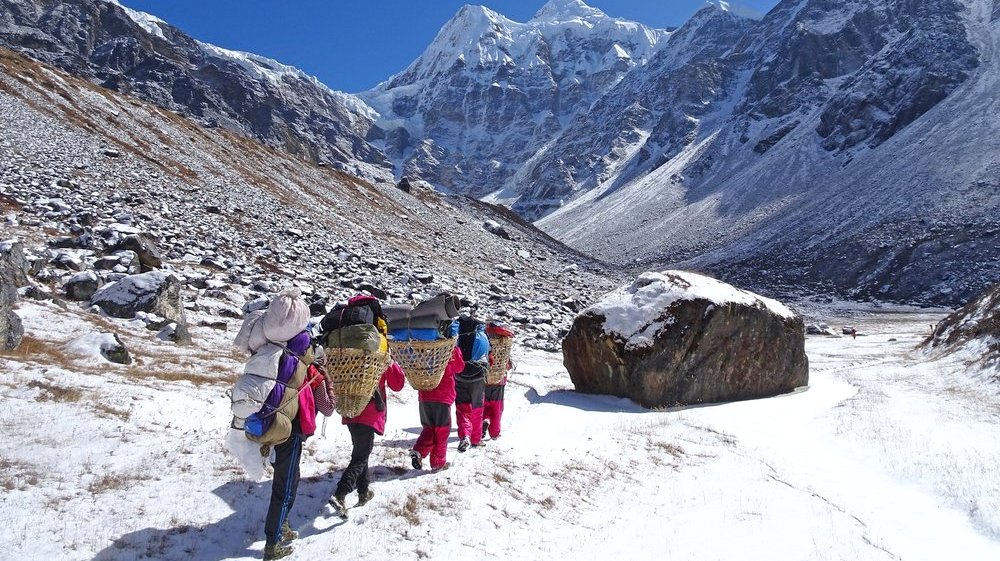
Role of Professional Guides
- Navigation and Safety: Guides ensure you stay on the right path and help manage any risks associated with high-altitude trekking, such as altitude sickness.
- Cultural Insight: They provide valuable insights into the local culture, traditions, and history, making your trek more than just a physical journey.
- Language Skills: Communication with locals is smoother with a guide who can translate and facilitate interactions.
- Crisis Management: In case of emergencies, a professional guide is trained to provide first aid and arrange for rescue and evacuation.
Role of Porters
- Carrying Luggage: Porters carry your luggage, allowing you to trek comfortably with just a day pack. This is especially beneficial in higher altitudes where conserving energy is crucial.
- Support Local Economy: Hiring porters contributes directly to the local economy, providing them with a vital source of income.
Legal Requirements
- In some trekking regions in Nepal, it is mandatory to have a guide for safety and regulatory reasons.
Our professional guides and porters in Nepal are not only beneficial for trekkers but also play a significant role in promoting responsible and sustainable tourism in the region. It ensures a safer, more enjoyable, and culturally rich trekking experience.
Permits for Trekking in Nepal
When trekking in Nepal, obtaining the necessary permits is a mandatory and crucial part of your preparation. Depending on your trekking destination, different permits may be required. Here's an overview of the various permits and their significance:
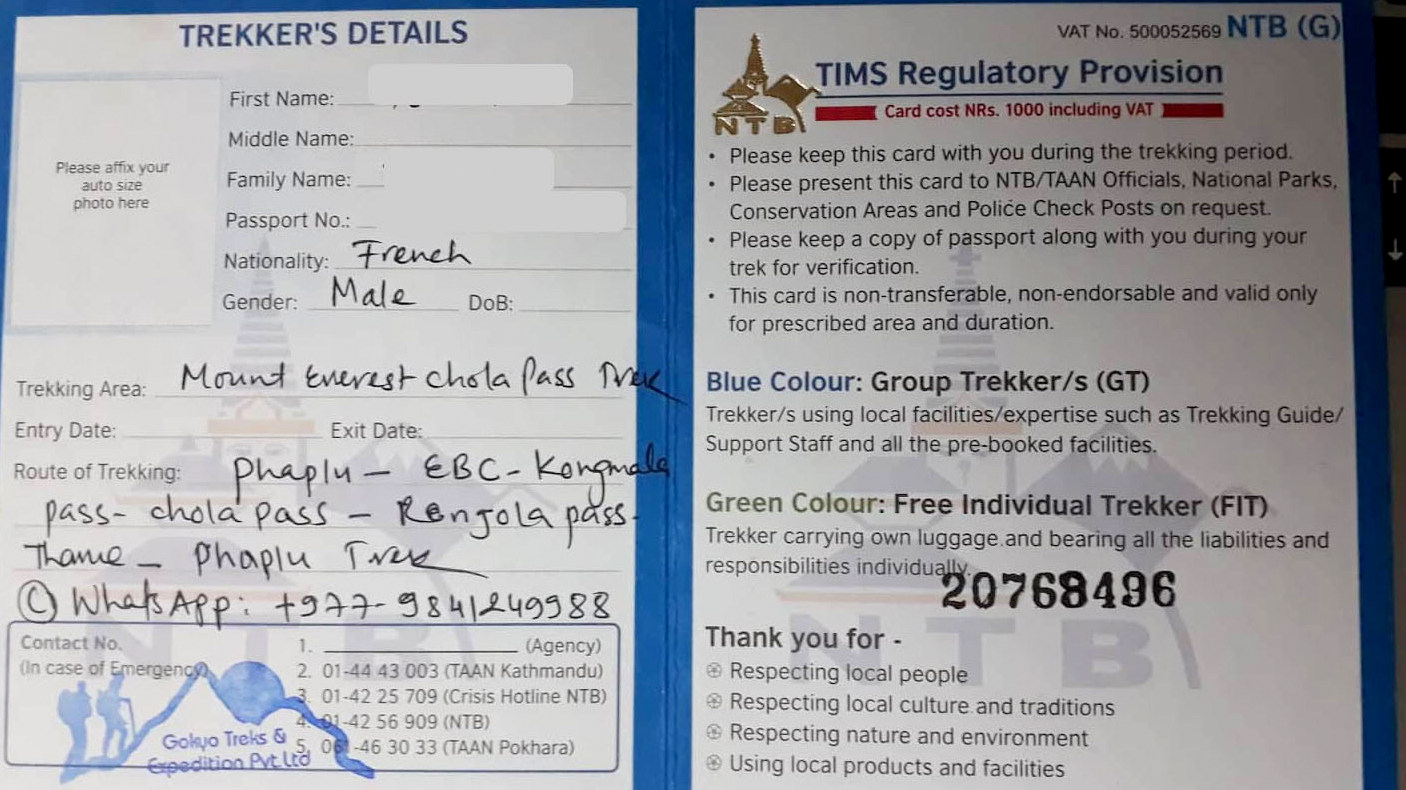
-
TIMS Card (Trekkers' Information Management System): The TIMS Card is required for trekking in most of the major trekking areas in Nepal. It's designed for the safety and security of trekkers, allowing authorities to keep track of trekkers in the region.
-
National Park or Conservation Area Permits: Many trekking routes in Nepal pass through national parks or conservation areas. You'll need to obtain a permit to enter these protected areas. This includes the Sagarmatha National Park for Everest treks, Annapurna Conservation Area for Annapurna treks, and Langtang National Park for Langtang treks, among others.
-
Restricted Area Permits: Some regions in Nepal are classified as restricted areas and require special permits to enter. These areas include Upper Mustang, Manaslu, and Kanchenjunga. The permits for these areas are more expensive and often require trekking in a group with a registered guide.
-
Local Area Permits: In addition to the above, certain local regions may require their permits. For instance, the Gaurishankar Conservation Area requires a separate permit.
-
Climbing Permits: If your trek includes climbing any peaks, a separate climbing permit is necessary. This is especially relevant for treks that include summiting trekking peaks like Island Peak or Mera Peak.
-
How to Obtain Permits: Most permits can be obtained in Kathmandu or Pokhara at government offices. It's advisable to arrange these permits in advance, especially during peak trekking seasons.
-
Required Documentation: To obtain these permits, you will typically need to provide copies of your passport, visa, and passport-sized photos. Always carry these documents with you during your trek.
-
Cost of Permits: The cost of permits varies depending on the trekking area. Restricted area permits are generally more expensive due to the sensitivity and exclusivity of these regions.
-
Importance of Permits: Permits are crucial for the conservation and maintenance of trekking regions. The fees collected are used for environmental protection and community development projects within the trekking areas.
-
Legal Requirements: Trekking without the required permits is illegal and can result in penalties. It's essential to comply with the permit regulations to avoid any legal issues during your trek.
Obtaining the necessary permits is an essential step in planning your trek in Nepal. It not only legalizes your trek but also contributes to the sustainable development and conservation of the trekking regions.
Best time to Trek in Nepal
The best time to trek in Nepal is typically during the pre-monsoon spring months of March to May and the post-monsoon autumn months of September to November. These periods are favored for their favorable weather, good visibility, and comfortable temperatures, which are crucial factors for a successful trek.
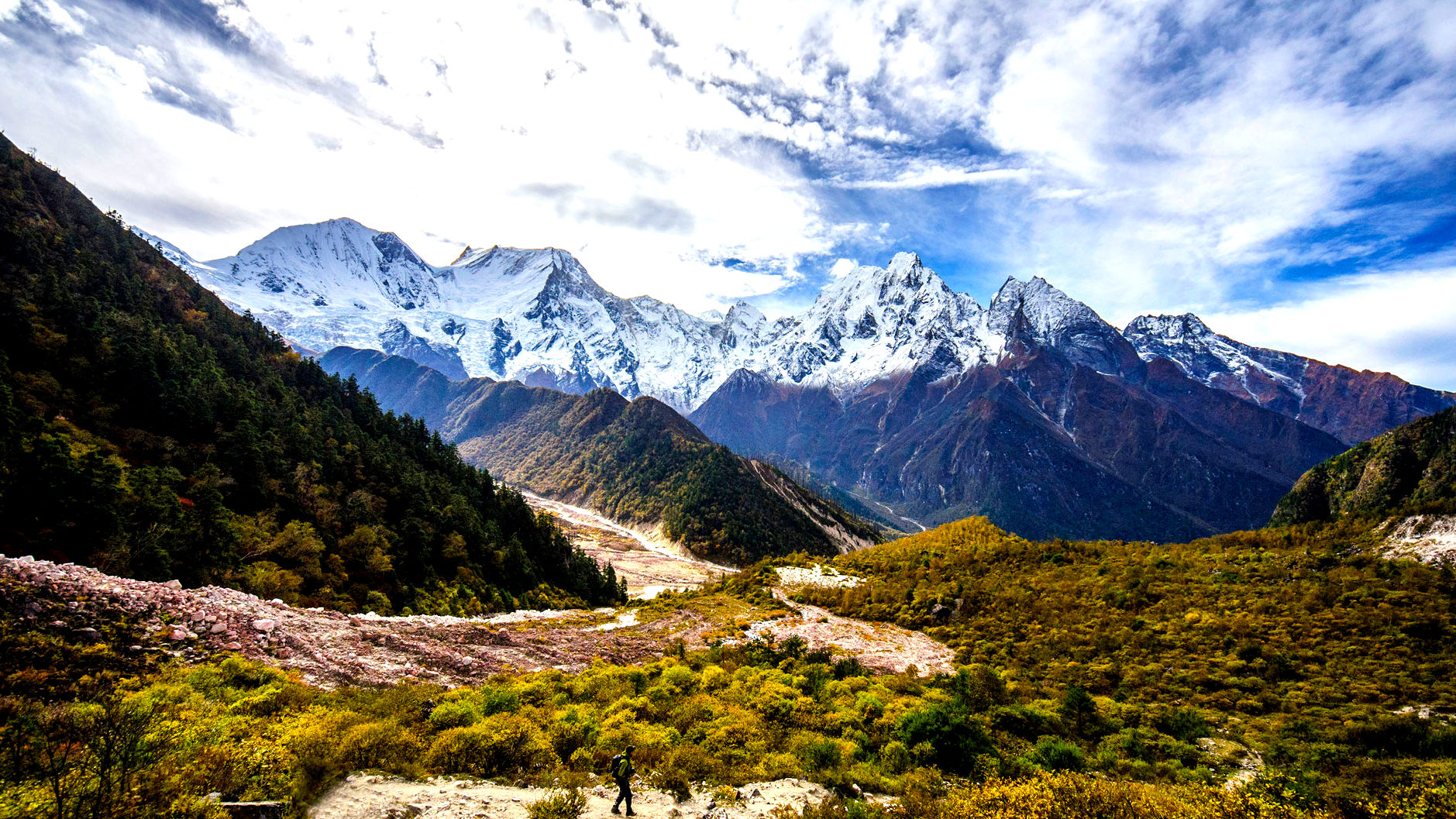
Spring (March to May)
- Weather: The weather during spring is generally stable and dry. As the season progresses, the temperature gradually warms up, making it comfortable for trekking.
- Visibility: Visibility is usually good, with clear skies. However, there can be occasional pre-monsoon showers towards the end of May.
- Temperature: Temperatures vary greatly depending on the altitude. Lower elevations are pleasantly warm, while higher altitudes remain cool. Nights can still be chilly in the mountains.
- Highlights: Spring is ideal for observing the blooming rhododendrons and other wildflowers, especially in the lower to mid-elevation forests.
Autumn (September to November)
- Weather: This season is known for its stable and clear weather, with minimal rainfall. The monsoon season ends in early September, leaving the landscape lush and green.
- Visibility: Visibility is excellent, making it the best season for mountain views. The clear skies provide spectacular panoramas of the Himalayan ranges.
- Temperature: Similar to spring, daytime temperatures are comfortable for trekking, although it starts getting colder towards November, especially at higher altitudes.
- Highlights: Autumn is considered the best time for trekking in terms of weather and visibility. It's also the season for some major Nepalese festivals like Dashain and Tihar, adding a cultural element to the trek.
Off-Peak Seasons
- Summer/Monsoon (June to August): Characterized by heavy rains and warmer temperatures. Trails can be slippery, and leeches are common. However, some regions like Upper Mustang and Dolpo are in rain shadow areas and are suitable for trekking in monsoon.
- Winter (December to February): Winter brings colder temperatures, especially at higher altitudes where some passes may be closed due to snow. However, lower altitude treks can be enjoyable, with fewer crowds and clear skies.
The best time to trek in Nepal is during the spring and autumn months, offering the most reliable weather, clear skies for excellent mountain views, and generally comfortable trekking temperatures. However, choosing the right time also depends on the specific region you plan to trek in and your personal preferences regarding weather, scenery, and crowd levels.
Travel Insurance
When planning a trekking trip to Nepal, obtaining Travel Insurance is an essential step. The nature of trekking in remote and high-altitude areas carries inherent risks, and having comprehensive travel insurance ensures you are covered for a range of unforeseen circumstances.
-
High Altitude Coverage: It's crucial to ensure that your insurance policy covers trekking at high altitudes. Many treks in Nepal, including the Everest Base Camp and Annapurna Circuit, go above 4,000 meters, where there is a risk of altitude sickness.
-
Emergency Evacuation and Rescue: The policy should include coverage for emergency helicopter rescue and evacuation, as medical facilities in remote trekking areas are limited. Helicopter rescues in Nepal can be very costly without insurance.
-
Medical Expenses: Make sure your insurance covers medical treatment costs, including hospital stays and treatment for altitude sickness, injuries, and other illnesses that might occur during the trek.
-
Trip Cancellation and Interruption: A good travel insurance policy should cover trip cancellations or interruptions due to unforeseen events like natural disasters, personal health issues, or other emergencies.
-
Baggage and Personal Belongings: Coverage for lost, stolen, or damaged baggage and personal belongings is also important. This includes expensive gear like cameras, smartphones, and trekking equipment.
-
Repatriation: In case of a severe medical emergency or death, repatriation coverage ensures that you or your body can be transported back to your home country.
-
Policy Duration: Ensure the duration of the policy covers your entire trip, from departure to return. Some policies have specific trekking duration limits, so it's essential to check these details.
-
Read the Fine Print: Always read the fine print of your insurance policy to understand what is and isn't covered. Some policies may have exclusions for certain activities or circumstances.
-
Local Laws and Trekking Permits: Be aware that in certain areas in Nepal, it is mandatory to have travel insurance to obtain trekking permits. This is to ensure trekkers can cover any rescue and medical costs incurred.
-
Insurance Provider's Reputation: Choose a reputable insurance provider with good customer reviews, especially in handling claims and providing assistance during emergencies.
Having the right Travel Insurance is not just a safety net but also peace of mind for trekkers in Nepal. It ensures that you can fully enjoy your trekking experience, knowing that you are covered in case of any emergencies.
Preparing for Trekking in Nepal
Preparing for Trekking in Nepal involves careful planning and consideration to enlsure a safe and enjoyable experience. Here's a guide to help you prepare effectively for your trekking adventure:
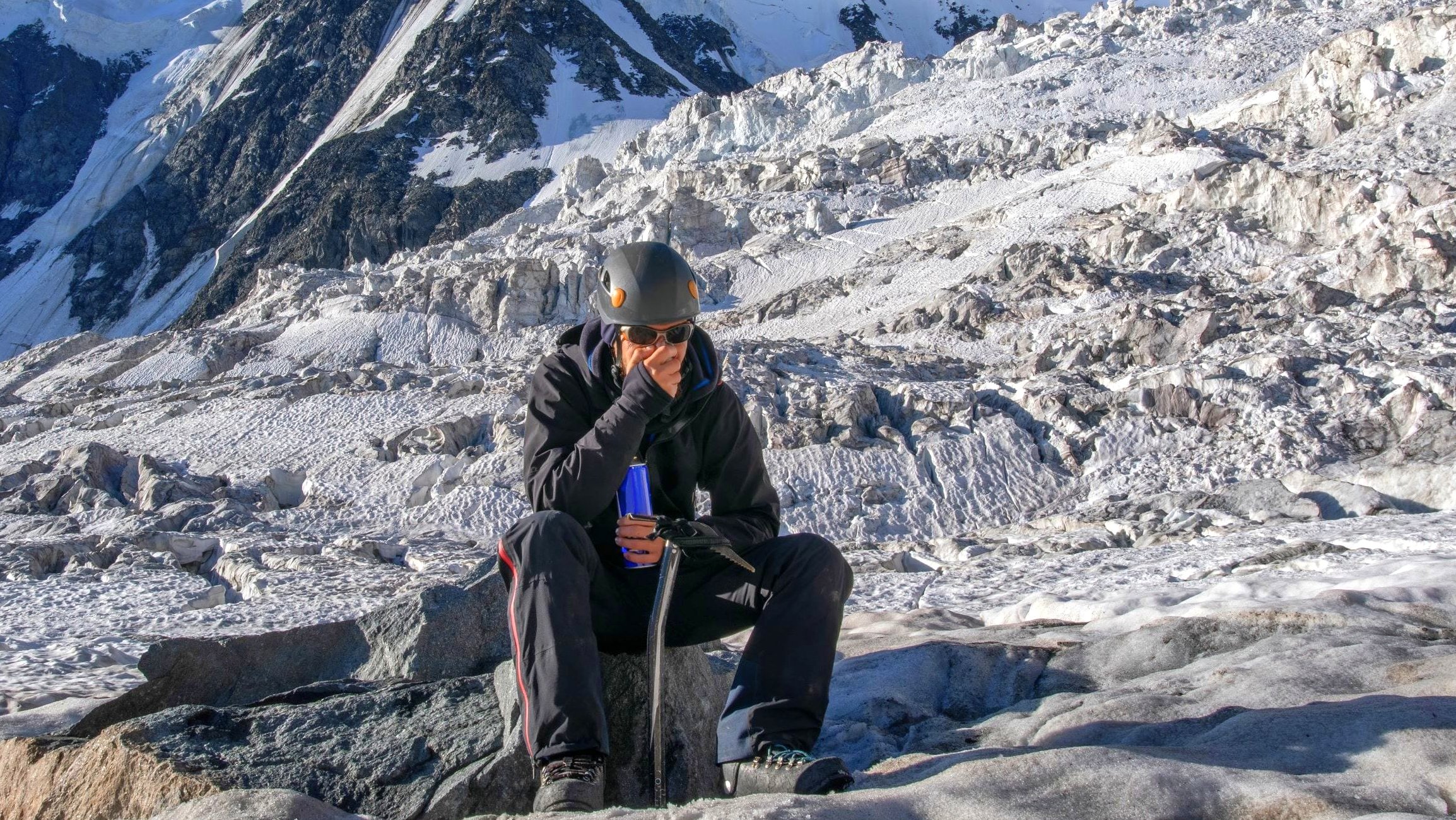
-
Physical Fitness: Trekking in Nepal can be physically demanding, especially on routes that involve long days and steep climbs. Engage in regular exercise like hiking, jogging, cycling, or swimming several months before your trek to build stamina and endurance.
- Acclimatization Plan: High-altitude treks require a well-thought-out acclimatization plan. Understand the symptoms of altitude sickness and know the importance of ascending gradually and allowing rest days.
-
Packing Essentials: Pack light but don't skimp on essentials. Your gear should include a good quality backpack, a sleeping bag suitable for the temperatures you will encounter, trekking boots, waterproof and windproof clothing, a first-aid kit, and personal medications.
- Health Precautions: Visit a travel clinic for a health check-up, vaccinations, and advice on altitude sickness prevention. Carry a supply of personal medications and a basic first-aid kit.
-
Insurance: Make sure you have appropriate travel insurance that covers high-altitude trekking and emergency evacuation.
-
Local Customs and Etiquette: Learn about local customs, traditions, and etiquette to ensure respectful interactions with the local communities. Understanding basic Nepali phrases can also enhance your experience.
-
Food and Water Safety: Plan for food and water safety. While teahouses provide meals, carrying some energy bars and snacks is advisable. Use water purification methods like boiling, filters, or purification tablets.
- Professional Guides and Porters: Our professional guide and porter. A guide can enhance your trek with local knowledge and language skills, while porters can ease the physical strain of carrying a heavy backpack.
-
Mental Preparation: Mental readiness is as important as physical preparation. Be prepared for challenging days, basic accommodations, and simple food. A positive attitude and flexibility are key to enjoying the trekking experience.
-
Sustainable Trekking Practices: Be mindful of sustainable trekking practices, like disposing of waste properly, using eco-friendly products, and respecting wildlife and natural habitats.
-
Emergency Planning: Have a plan for emergencies. Know the nearest health facilities on your route and carry essential emergency contact numbers.
Preparing for Trekking in Nepal requires a combination of physical preparation, logistical planning, and mental readiness. By covering all these bases, you can ensure a rewarding and memorable trekking experience in the stunning landscapes of Nepal.
Trekking in Nepal is an extraordinary journey that offers more than just a physical challenge; it's a profound experience that immerses you in breathtaking landscapes, rich cultures, and unforgettable adventures. Whether you traverse the well-trodden paths to Everest Base Camp, explore the remote corners of Upper Mustang, or revel in the natural beauty of the Annapurna region, every step in Nepal is a step into a world of awe and wonder. With its diverse trails, spectacular mountain scenery, rich cultural experiences, and commitment to sustainable and eco-friendly travel, Nepal stands as an unparalleled destination for trekkers around the world. Preparing adequately and respecting local customs and environments will enhance your trekking experience, making it not just a journey through the Himalayas, but a journey of personal growth and discovery.
FAQs of the Trekking in Nepal
Q: What is the best time to go trekking in Nepal?
A: The best times for trekking in Nepal are during the spring (March to May) and autumn (September to November) seasons when the weather is stable and visibility is clear.
Q: How physically fit do I need to be to trek in Nepal?
A: Physical fitness requirements vary depending on the trek. Generally, you should be in good health and have a decent level of fitness. Some high-altitude treks require higher endurance and stamina.
Q: What are the necessary permits for trekking in Nepal?
A: Necessary permits include the TIMS Card, National Park or Conservation Area permits, and, for certain areas, restricted area permits. The required permits depend on your specific trekking destination.
Q: What should I pack for a trek in Nepal?
A: Essential items include trekking boots, weather-appropriate clothing, a sleeping bag, a first-aid kit, personal medications, a water purification method, and a backpack. Pack light but don't skimp on essentials.
Q: Can I experience altitude sickness, and how can I prevent it?
A: Yes, altitude sickness is a risk on higher treks. Prevent it by acclimatizing properly, ascending gradually, staying hydrated, and avoiding alcohol and tobacco. Medication like Diamox can also help.
Q: Are there any specific health concerns I should be aware of?
A: Besides altitude sickness, be aware of risks like dehydration, sunburn, and stomach issues. Visit a travel clinic before your trip for vaccinations and health advice.
Q: What kind of accommodation can I expect while trekking?
A: Accommodation varies from basic teahouses offering dormitory-style rooms and shared facilities to more comfortable lodges with private rooms in popular trekking areas.
Q: Is travel insurance necessary for trekking in Nepal?
A: Yes, travel insurance that covers high-altitude trekking and emergency evacuation is crucial for trekking in Nepal due to the remoteness and inherent risks of the trails.
Q: How can I ensure my trek is eco-friendly?
A: Practice Leave No Trace principles, stay in eco-friendly lodges, use water purification methods instead of buying bottled water, and respect local wildlife and natural habitats.
If you need any further information, please contact us by email: at [email protected], Phone: at +977- 985 100 5129 (WhatsApp)




